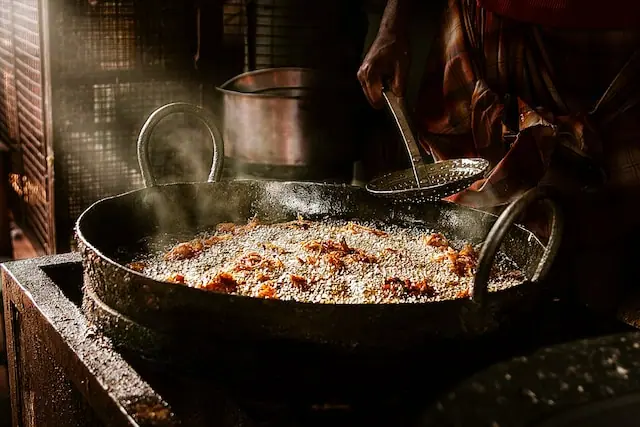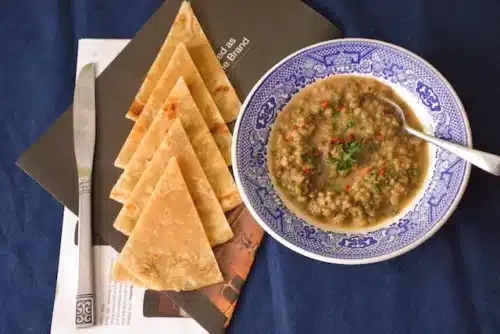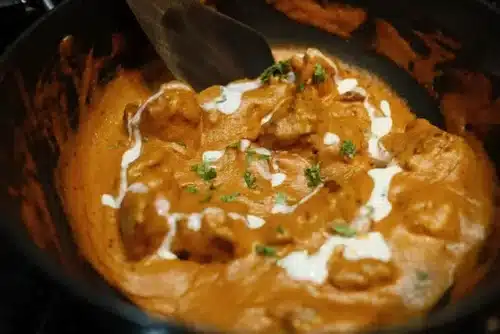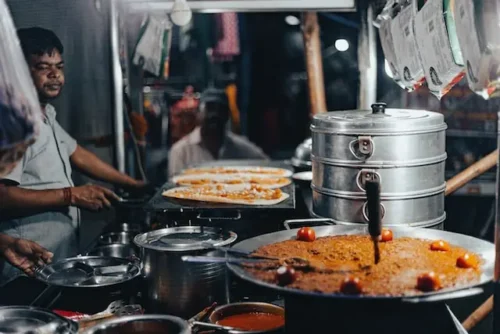
A Beginner’s Guide to South Indian Cooking
Imagine plates brimming with golden crispy dosas, fluffy idlis that melt in your mouth, and sambhar that dances on your palate with a symphony of spices. South Indian cuisine isn’t just food; it’s a harmonious ensemble of colors, aromas, and textures that’ll teleport you straight to the bustling streets of Chennai or the serene backwaters of Kerala. In a world where taste knows no borders, South Indian dishes have gracefully waltzed onto global plates, leaving a trail of awe-struck taste testers in their wake. But fear not, dear reader, whether you’re a kitchen novice or a seasoned pro, this guide is crafted especially for you—your compass to navigate the culinary treasures of South India. Let’s dive into the mesmerizing universe of South Indian cooking. Spices at the ready, aprons on—let the adventure begin!
The Flavorful Essence of South Indian Cuisine
It isn’t just about food – it’s a burst of flavors that tingles your taste buds. Bold tanginess, fiery spiciness, and aromatic spices’ captivating aroma mingled in a single dish. Freshness is the name of the game here.
Every bite celebrates vibrant, locally-sourced ingredients and various spices that are nothing short of magic. But wait, a trio steals the spotlight – rice, lentils, and coconut. These ingredients are like the culinary backbone of South Indian cooking, turning each dish into a masterpiece. What’s truly special about South Indian meals is how they create a symphony of flavors. The tangy notes play alongside the spicy beats, all harmonizing to perfection. And the aroma? It’s a ticket to a spice bazaar right in your kitchen.

Must-Try Traditional South Indian Dishes
Dosa, oh dosa! Crispy, golden, and oh-so-delicious. Picture thin, delicate crepes with a delightful crunch. And what’s a dosa without a sidekick? Chutneys! These flavorful companions range from coconut and mint to tomato and tamarind, creating a taste explosion with every dip. Teamed delights, anyone? Idlis are like fluffy clouds that melt in your mouth. They’re not just breakfast; they’re a comforting embrace any time of day. And don’t forget the chutneys and sambhar that turn these simple idlis into a symphony of flavors. Hold onto your spoons – sambhar is here! This lentil-based stew is a superstar, loaded with vegetables and spices that create a taste explosion. It’s tangy, spicy, and oh-so-comforting. Let’s talk comfort in a bowl – upma! This semolina-based dish is like a hug for your taste buds. With a mix of spices, veggies, and nuts, every bite is a party of textures and flavors.
Essential Ingredients for Your South Indian Pantry
Rice is the canvas of South Indian cooking. Long-grain Basmati, aromatic Jeera, or the beloved Ponni – each rice variety brings its unique touch to dishes. From fluffy idlis to flavorful biryanis, rice sets the stage. Spices are the heart of South Indian cuisine. Mustard seeds pop in the pan, curry leaves release their aroma, and asafoetida add depth. This medley is the secret behind that captivating South Indian taste. Lentils are the protein powerhouse. Urad dal gives idlis their fluffiness, toor dal creates the soul-soothing sambhar, and moong dal brings a delicate touch to dishes. These lentils are the backbone of South Indian cuisine. Coconut adds a creamy twist to these stunning dishes. Grated coconut in chutneys, coconut milk in curries, and coconut oil for tempering – it’s a triple threat of flavor and richness.

Unveiling South Indian Cooking Techniques
Fermentation works its magic in South Indian kitchens. Letting dosa and idli batters ferment gives them that airy texture and tangy kick. Patience is the key to this enchanting transformation. Tempering is a flavor booster. Heat oil, add mustard seeds, curry leaves, and other spices – the sizzle releases aromas that infuse your dishes with a burst of taste. Tadka, or tempering, adds a final touch of magic. Fry spices in ghee or oil, then drizzle this aromatic essence over your dishes. It’s like a fragrant hug for your food. Steaming creates wonders in South Indian cuisine. It turns batter into fluffy idlis and crispy vadas. The gentle process retains flavors, making every bite a delightful surprise. Master these techniques, and you’ll orchestrate a symphony of flavors and textures defining South Indian cuisine. Get ready to wield your culinary wand!
Building Your South Indian Kitchen
People worldwide, especially in Hong Kong, make South India their new home. Why? It’s probably the food. Your kitchen becomes a stage with the right cookware. A dosa tava for those crispy dosas, an idli steamer for fluffy idlis, and a tadka pan for that sizzling tempering. These tools are your kitchen’s heroes. Grinders are your kitchen sidekicks. They turn rice and lentils into silky batters and spices into aromatic pastes. They’re the unsung heroes behind those flawless South Indian textures. Coconut is the crown jewel of South Indian cuisine. Coconut scrapers and milk extractors make getting that precious coconut goodness easy. From grated coconut to creamy milk, they’re your ticket to authenticity.

Equip your kitchen with these essentials, and you’re all set to transform your space into a South Indian culinary haven. Or you can always relocate here. Nevertheless, if you plan on moving from Hong Kong to India, you should hire international movers. Partner up with expert movers to make this transition smoother. Then, once you get settled, go cookware shopping.
Read More: 8 Cooking Tips For Beginners Home Chefs
Finally
Dive into not just the flavors but also the dining etiquette accompanying South Indian cooking. Eating with hands is a cherished tradition. It’s not just about taste – it’s a sensory connection to your food. Plus, it enhances digestion and brings you closer to the experience. Banana leaves aren’t just plates – they’re a sensory delight. The leaves add a subtle flavor, enhancing the overall experience. Plus, they’re biodegradable, making them a sustainable choice. Spice levels vary across South India. Each region has its own spice identity, from the fiery Andhra dishes to the milder Kerala flavors. Embrace the heat or tone it down – it’s all about personal preference. Immerse yourself in South Indian dining customs for a complete cultural experience. It’s not just a meal; it’s a journey into tradition and taste.

